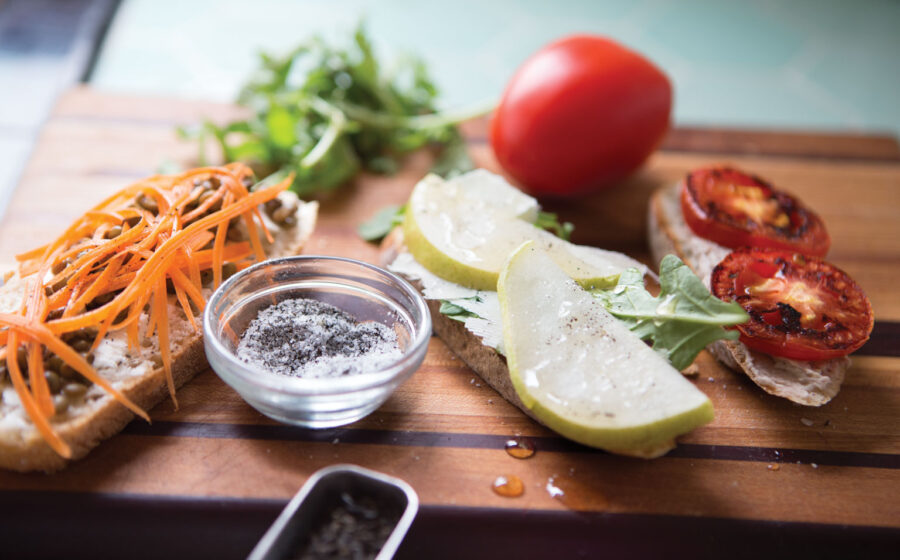[I]n her cookbook Steeped: Recipes Infused With Tea, Annelies Zijderveld—a writer and industry veteran who worked in marketing for Mighty Leaf Tea Company for eight years—presents seventy vegetarian recipes that challenge preconceived notions of the leaf. With ingenuity and an expansive approach that spans cuisines, Steeped encourages drinkers to really “exploit the true flavor of tea” by rethinking how we use the leaves. Green tea makes its way into vinegar for salad dressing, matcha swoops in to lend a grassy note to guacamole, and chamomile offers a sweet, honeyed touch to corn chowder.
“I wanted to pass on the idea to home cooks that tea can be an ingredient like a spice. I wanted to blow open the tea box a little bit,” says Zijderveld.
Zijderveld began to glimpse tea’s culinary possibilities more concretely during her tenure with Mighty Leaf. Whenever she traveled, she’d always ask chefs how they cooked with tea. “Whether it was Marcus Samuelsson or David Burke, chefs always had an answer at the ready, and it usually involved tea-smoked salmon or tea-smoked duck,” she says. There must be more to this, she thought.

One day she was writing marketing copy for an exquisite bluish-green gyokuro, a revered Japanese tea, and something came over her. “I poured it in a bowl, pinched some between my fingers and popped it into my mouth. As I was chewing it, I had the sensation of walnuts. I wanted to bake it into a shortbread cookie,” she explains. Soon after she participated in a charity bake sale with the cookies, and later continued to experiment with culinary tea, moving on to green tea granola and fennel lychee spring rolls with black tea dipping sauce. These were gateway experiences.
Steeped’s recipes operate under the fairly safe assumption that those who enjoy tea enough to buy a cookbook about it are going to be comfortable enough in the kitchen to put together items such as chamomile sugar and lapsang souchong salt. Or make masala chai applesauce and then not only eat it, but incorporate it as an ingredient in another recipe, masala chai pumpkin bread.
One aspect of her role as tea evangelist involves traveling around the country for culinary tea demonstrations at teahouses and cafés. She says it’s really easy for cafés that serve food to incorporate tea—an ingredient at the ready—in new or existing dishes. Masala chai and pecans come together in her spinach salad with pears and masala chai maple pecans; the spicy tea can also infuse its personality into plain yogurt, for example. And in her summer squash gruyere quiche, Moroccan mint tea, not ice cold water, helps bind the spelt crust; the leaves are ground and swirled into the quiche itself, like a spice. She relishes these opportunities to bring her passion for tea’s possibilities to a like-minded community. Demos illustrate the possibilities for tea, but they also serve a more intrinsically human function. “These events create a lovely community and encourage loyalty to (the café),” she says.
Zijderveld calls herself “inclusive,” saying her “goal is to make tea approachable” beyond its role as a beverage, and turn it into a full-fledged member of the kitchen.
—Carrie Havranek is a food and travel writer living in Easton, Pennsylvania. Photos by Cory Eldridge.
















